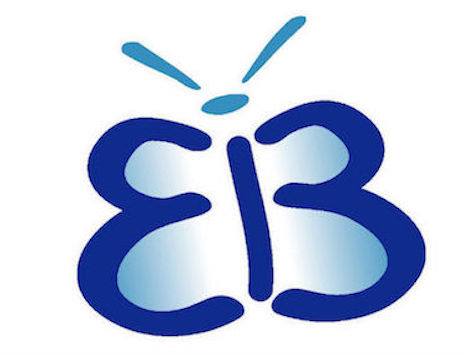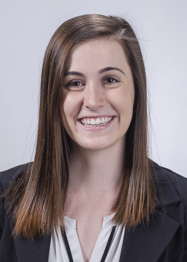Her mother’s silent tears streamed gently down her face as we carefully unwrapped the six-day-old’s soiled bandages. We assessed the infant’s raw and blistered skin, and I made a mental note to refer to these dermatological findings as “denuded” and “bullous.” I had never seen skin in this state before, let alone on a newborn. While she was being given her bleach bath, I took a glob of petroleum jelly and covered her fresh bandages. My heart went out to her as she cried while we gingerly began wrapping her sensitive skin in the new dressing. Once her body was protected, she sank into a deep sleep. It was at this point that we turned toward the patient’s mother. She wiped away her tears, but it was apparent she was in distress watching her daughter go through the process. My attending told the mother that even though her daughter had epidermolysis bullosa, she was a beautiful child who deserved all of the same love and care.
At the end of the day, I went home and read more about epidermolysis bullosa or “EB.” I learned how it is referred to as “the worst disease you’ve never heard of.” It is a rare genetic connective tissue disorder that causes the skin to be exceedingly fragile leading to blisters and tearing of the skin. There are varying types of EB, but the delicate skin is common to them all. There is no treatment and there is no cure. The mainstay of therapy is symptomatic and prevention of complications, including infection and dehydration. While reading, I learned why earlier in the day we had made sure to individually wrap the child’s fingers and toes that were affected by the blisters. As the blisters heal, they may scar together causing fusion and what is referred to as “mitten hands.” While I found EB to be truly fascinating, I could not help but feel saddened as I thought of our patient and the future she had ahead of her; even something as simple as putting on socks could cause her skin to blister. However, I was filled with hope as I read about the future for EB and the current research focused on the topic. From stem cell transplantation to gene therapies, the future is bright. My heart was also warmed as I read personal stories about persons with EB. While the patient’s life would not be without unique struggles, she could still have a beautiful life. My attending’s assurance to the mother was prominent in my head.
Over the next several days I continued to help with the patient’s dressing changes. I learned how to pierce and drain blisters to promote wound healing and I learned how the little girl loved her bleach bath time. I also discovered that there was no family history of EB on either parent’s side and that this patient had a sporadic mutation. Just as EB was novel to me, it was brand new to her parents.
During one of the dressing changes, the nurse turned to the mother and said, “Okay, Momma, it’s your turn.” I could see fear flash across the mother’s face. She was not afraid of her daughter but was rather afraid of hurting her. It had become clear over the past few days that unwrapping the baby brought the child discomfort as the bandages tugged at her blisters. With encouragement from the team, the mother began going through the dressing process she had been observing for the past week. This would soon be a task she would manage independently as her husband worked and her other child was still very young. She took great care with the process and it was reassuring to see that the child would be sent home in capable hands. I was in awe at this strong woman who was still recovering from her Caesarean section yet was prepared to do what was needed for her daughter. As we said goodbye to the family prior to discharge, I knew I would not forget this patient and I again wondered what the future had in store for her.
It was only a week later that by chance I had the opportunity to glance into a potential future for this patient. One morning I was told by the on-call attending that one of their EB patients had been admitted to the hospital for complications relating to EB affecting her respiratory tract and esophagus. Though we were at the children’s hospital, this was an adult patient that continued to receive care here as they were intimately familiar with her and with EB. We went to visit the patient and I thought of the newborn I had met previously. Unlike the baby, this patient was able to tell us how much pain she was in. When asked to further explain her pain, she said it was so bad she wanted to jump out of the window; this was not taken lightly. The attending quickly went to work and was an advocate for the patient. Some had labeled the patient as a drug-seeker, but seeing her current state, I did not know how anyone could doubt she was in true pain. Her whole back was one large denuded patch of skin. It was red and angry. I could not imagine what she must be going through internally if this was her status externally. While we waited for her medication, the attending began patting her leg. The patient reported that this was helping distract her from the pain by giving her something else to focus on, so I followed suit to try and help her in any way possible. Once she was able to fall asleep, we left the room and had a debrief on the patient. I learned about her history from the attending and was able to learn more about EB.
The next time we went to see this adult patient, she was a different person. She seemed happy and was constantly cracking jokes. I soon learned that this was who she truly was, and it was wonderful to see her personality shine through. I was happy to get to know her. Once again I assisted a mother with dressing changes and although the process overall was still the same, it was a different experience with an adult patient. First of all, there was a lot more petroleum jelly. Second of all, it really became a team effort as we passed the bandages to and fro under her arms and around her abdomen. We could not simply pick her up if need be. Finally, I was able to learn what a dressing change meant to the patient. It was a very humbling experience to be able to talk to the patient and learn from her. She shared with me what it meant to live with EB. I learned about the hardships and while I was anticipating hearing about the pain and the multiple hospitalizations, I was not expecting to learn about her bullying. She had been called awful names due to her condition, including insults from her own family. My heart broke at this knowledge. I value kindness above all else and she deserved better. However, I also learned about the positives in her life, from shopping with her friends to spending time with her close sister. I felt very fortunate for the opportunity to speak with her and to learn about her life. Yes, she has EB, but EB does not have her. These patients have impacted me deeply, and I hope to one day be a part of the cure for EB.
Please visit www.debra.org for more information on Epidermolysis Bullosa.
Jenna Koblinski is a member of The University of Arizona College of Medicine – Phoenix, Class of 2021. She graduated from The University of Arizona in 2017 with a Bachelor of Science in physiology and a psychology minor. She is an aspiring dermatologist. In her free time she loves to dance, socialize, and watch anything and everything on Netflix.


